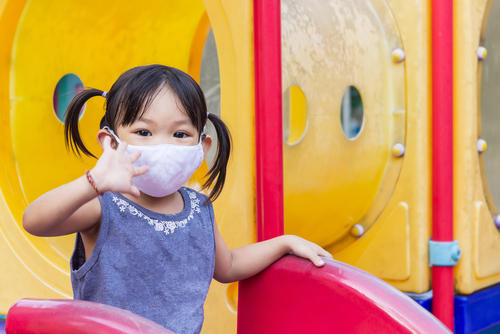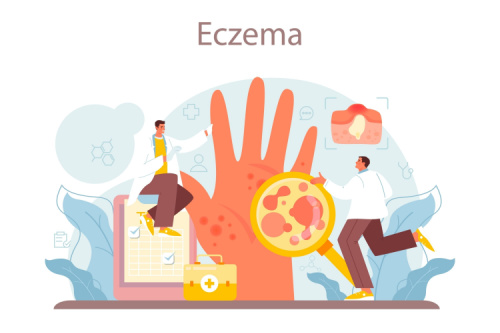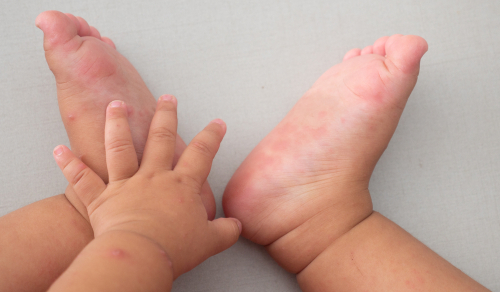WORDS DR LIM YIN SEAR AND DR MAHFUZAH MOHAMED
 FEATURED EXPERT FEATURED EXPERTDR LIM YIN SEAR School of Medicine Faculty of Health and Medical Sciences Taylor’s University |
| FEATURED EXPERT DR MAHFUZAH MOHAMED School of Medicine Faculty of Health and Medical Sciences Taylor’s University |
NEW NORMAL LEADS TO NEW ‘CULTURE SHOCK’ FOR A CHILD’S IMMUNE SYSTEM
For the duration of the COVID-19 pandemic, children were predominantly confined to their home and as a result, were less exposed to common bacteria and viruses. This will render younger children’s immune system to develop poorly.
From March 2022 onwards, as life seemed to make its way back to normality, children started to attend school, enrichment classes, and sports activities again.
This has led to many young kids falling ill with diseases such as influenza, hand-foot-and-mouth disease, and lung infections. An elevated frequency of visits to the doctor has worried many parents that their children may have weakened immune system (we say that these children are then immunocompromised).
ARE CHILDREN REALLY MORE PRONE TO INFECTIONS POST-PANDEMIC?
Currently, there is no scientific data to show that children are more prone to infections after the pandemic.
HOWEVER, THERE ARE CERTAIN FACTORS THAT CAN INDIRECTLY UP THE RISK OF INFECTIONS IN CHILDREN
A briefing by UNICEF on the impact of COVID-19 on children has shown that the prevalence of unhealthy diets such as snacking has increased. This may be due to a lack of easy access to fresh food and financial constraints, possibly leading to childhood obesity and malnourishment.
Additionally, a sedentary lifestyle and the lack of exercise could contribute to childhood obesity, escalating vulnerability to infections.
Another major issue that arose during the MCO period was the disruption of essential health services including childhood immunisations. In a recent WHO pulse survey, 90% of countries reported disruptions to routine immunisations. Immunisations are of utmost importance for preventing certain infectious diseases.
Another important issue that needs to be taken seriously is the mental health of children and their caretakers. The Adverse Childhood experience (ACE) study showed that adverse childhood experiences in categories of abuse, household challenges, and neglect are not only associated with worse mental health outcomes, but also with chronic health conditions such as diabetes, heart disease, chronic obstructive pulmonary disease, liver disease, and cancer.
POSSIBLE SIGNS THAT YOUR CHILD MAY HAVE A WEAK IMMUNE SYSTEM |
|
TOO CLEAN ISN’T ALWAYS GOOD
Some parents go to the extreme to create a “super clean” environment to protect their children and forbid the children to play or touch anything or anyone that has not been sanitised. This isn’t necessarily a good thing, and here’s why.
In the early years, our immune system is a blank canvas. Although infectious disease is a legitimate cause for concern, and a certain level of cleanliness is necessary, children need to develop an immunity to common pathogens.
Overprotecting children from germs is detrimental to their development. Therefore, parents need to balance between a clean environment rather than a sterile environment.
HOW ABOUT HAND-WASHING AND SANITISING?
Studies have shown that soap and water are better equipped to remove more germs from one’s hand than hand sanitiser does.
However, it is still recommended to use hand sanitisers when washing with soap is not an option.
LET’S TALK ABOUT VITAMIN D
Generally speaking, children with a balanced diet and outdoor activities would attain the daily requirement of nutrients.
A minimum of 400 IU (10 µg/day) of vitamin D is recommended for children and adolescents, especially among exclusively breastfed infants and all children and adolescents who are not routinely exposed to sunlight.
Vitamin D supplementation is only recommended to those who are unable to obtain an adequate amount of vitamin D from their diet or have inadequate exposure to sunlight.
| Care should be taken while consuming vitamin D supplementation. A daily vitamin D intake of 2,000 IU or more puts one at risk of vitamin D toxicity. The signs and symptoms of toxicity include headache, a metallic taste in one’s mouth, pancreatitis, nausea, and vomiting. |
| This article is part of our series on infectious diseases and other health issues that can affect our children’s wellbeing. |







